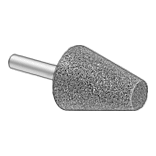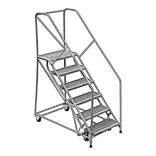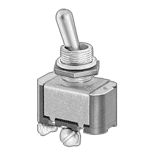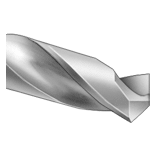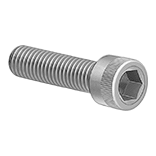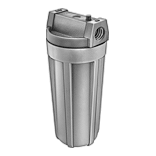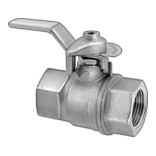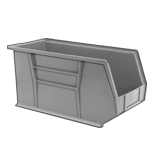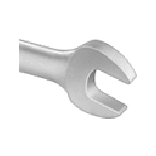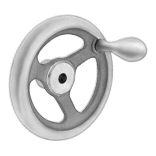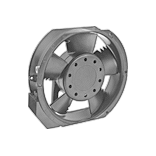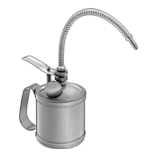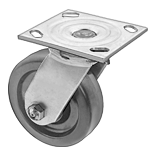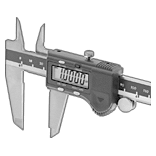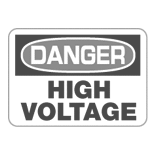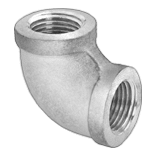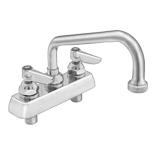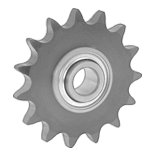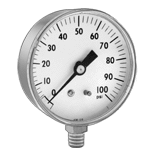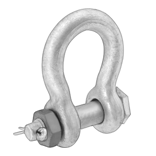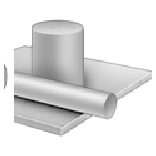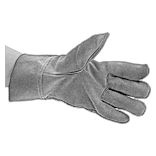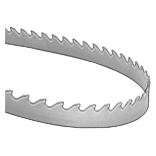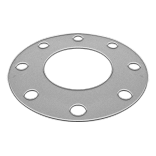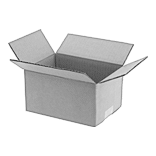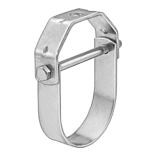About Metal Tubing
More
About Sleeving
More
Smooth-Bore Seamless Stainless Steel Tubing

Seamless construction with no weld bead gives this tubing an interior with unrestricted flow. It is stronger than welded tubing and can be flared without splitting.
304 stainless steel has very good corrosion resistance.
316 stainless steel offers excellent corrosion resistance.
Tubing that meets ASTM specifications adheres to international standards for dimensions and materials.
- Temperature Range:
304 Stainless Steel: -425° to 1500° F
316 Stainless Steel: -325° to 1500° F - Bending Method: Tube Bender
- For Use With: Natural Gas, Water, Oil, Air
- Compatible Tubing Fittings: Butt Weld, Compression, Flared, and Yor-Lok
Welded Stainless Steel Tubing

When your application does not require a smooth interior, this tubing is an economical choice. It has a weld bead on the inside.
304 stainless steel has very good corrosion resistance.
- Temperature Range: 304 Stainless Steel: -420° to 1500° F
316 Stainless Steel: -320° to 1500° F - Bending Method: Tube Bender
- Compatible Tube Fittings: See table
Miniature Stainless Steel Tubing

Also known as hypodermic or needle tubing, this tubing has thin walls and is made to tight tolerances for use in precision applications. It is welded with a smoothed weld bead on the inside to reduce particle buildup. Tubing connects by welding. To cut this tubing, you can use abrasive cutoff wheels and deburring tools or electrolytic cutting tools (not included).
304 stainless steel has very good corrosion resistance.
316 stainless steel has excellent corrosion resistance.
- Temperature Range: See table
- Bending Method: Tube Bender
| OD | Wall Thick. | ID | Tubing Needle Gauge | Max. Pressure | Temperature Range, °F | Temper Rating | 1 ft. | 3 ft. | |
304 Stainless Steel—For Use With Air, Natural Gas, Oil, Water | |||||||||
|---|---|---|---|---|---|---|---|---|---|
| 0.12" | 0.015" | 0.09" | 11 | 5,000 psi @ 72° F | -420° to 600° | Hard | 0000000 | ||
316 Stainless Steel—For Use With Air, Natural Gas, Oil, Water | |||||||||
| 0.12" | 0.015" | 0.09" | 11 | 5,000 psi @ 72° F | -420° to 600° | Hard | 00000000 | ||
General Purpose Aluminum Tubing

- Temperature Range: -450° to 400° F
- Bending Method: Tube Bender
- Compatible Tube Fittings: Flared
This tubing is lightweight with good corrosion resistance and weldability. It has magnesium and silicon added for strength. Tubing is seamless, which provides a smooth interior for unrestricted flow. It can be flared without splitting.
High-Temperature Electrical-Insulating Tube Sleeving

This sleeving is often used to insulate connections in transformers, relays, and solenoids. It prevents electricity and heat from dissipating from wire and cable. When exposed to flame, it will self-extinguish and produce a nonconductive ash. It’s flame rated VW-1 to meet requirements for preventing the spread of flames based on a timed test with vertically suspended material. Made of silicone-coated fiberglass, it resists chemicals.
Electrical-Insulating Tube Sleeving

Add a layer of insulation to prevent electricity and heat from dissipating from wire and cable. This sleeving is often used in motors, transformers, and generators. Made of coated fiberglass, it resists abrasion, acids, alkalies, and chemicals.
Acrylic-coated sleeving is more flexible than vinyl-coated sleeving, so it bends around tight corners. It resists solvents and oil.
Vinyl-coated sleeving resists wax and alcohol. Sleeving is flame-rated VW-1 to meet requirements for preventing the spread of flames based on a timed test with vertically suspended material.
Chemical-Resistant Tube Sleeving

Made of PVC, this sleeving resists chemicals, oil, and acids. It’s flame rated VW-1 to meet requirements for preventing the spread of flames based on a timed test with vertically suspended material. Because this sleeving is non-expandable, it does not stretch, so it’s best for applications where you know the exact diameter of the items you need to protect.
